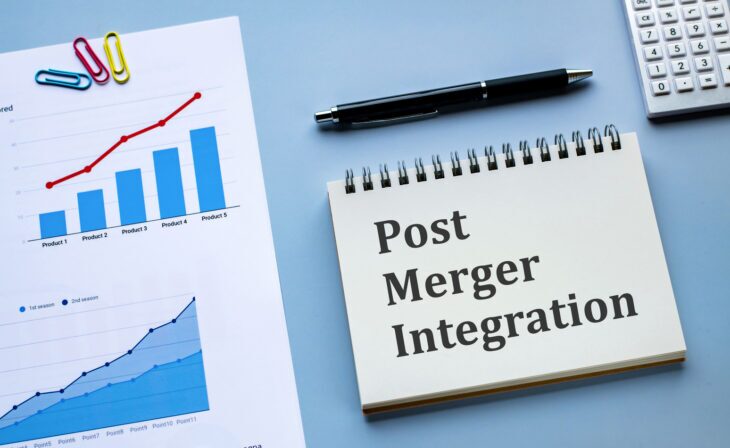Mergers and acquisitions are a glamorous but volatile part of the world of business: large deals between corporations to acquire cutting-edge technical or operational advantage.
They’re huge purchases with equally huge upside for negotiating parties. At this scale, however, you want to make sure you understand the process and get it right.
This comprehensive guide to understanding the M&A process will outline the framework for mergers and acquisitions. You’ll receive a new appreciation for the difficulties – and why Acquinox’s expert consultancy could be the deciding factor in the next high-profile acquisition.
Merger: when two companies are combined into a single, resulting company. Typically similar sized companies.
Acquisition: when one company buys another, folding it into the existing larger brand.
The Mergers And Acquisition Process
The mergers and acquisitions process changes depending on whether a purchase is direct, or searched.
For many brands, especially larger ones, it is important to consult experts during the strategy stage to ensure the correct merger or acquisition.
Often, our expertise is required once companies have begun their own outreach process and require specialist consultancy. In these ‘direct’ cases, the process begins with a preliminary valuation (step 4 onwards).
At Acquinox, we’ve got a fully developed system for both ‘search’ and ‘direct’ consultancy – this is just a ‘bird’s eye view’ of the process.
1. Acquisition Strategy And Parameters
Acquisition ‘buyer’ partners outline the strategic goals they’re looking for in a purchase. This could be an intellectual property advantage, geographical benefits, or improving cross-organisation synergy.
On the other hand, lining up the wrong acquisition can be a waste of time, money, and considerable human resources. This is one reason why mergers and acquisitions benefit from:
- Clear strategic vision and well-defined goals
- Rigorous planning
- Expert guidance and consultancy
- A tried-and-tested acquisition framework
For both buyers and sellers, these inform the process. They’re also where consultancy like Acquinox finds a home, reducing upfront risks and producing a smoother process.
2. Refined Selection
Once there’s a general plan for which businesses and benefits are in the ‘scope’, it’s essential to search the market. This is often performed by specialists with access to large industry databases – covering things like patents, employee count, financial reviews, and more.
A good search will refer back to the goals from the strategy and give a clear image of the field. Companies that fit this ‘first round search’ are added into a long list. This comes before a short list and often includes the whole pool of suitable businesses to be cut down to ‘ideal’ ones. Proper marketing and accessibility are key for sellers here: it’s easy to be overlooked, even with the best assets and operational structure. Being easy to find through networks, directories, and industry reputation all help with being identified as a key acquisition seller.
2. The Approach
This is the outreach step where the buying partner connects with the companies from their list to begin discussions.
This isn’t a guarantee, however. This introduction is part of the screening and review process used to narrow down the acquiring party’s long list into more and more specific choices. For buyers and sellers alike, the approach process should be measured and courteous, without over-committing.
These discussions will also determine the eagerness of target business’s stakeholders to sell, under what conditions, and establish motivations. The wrong approach, and subsequent misgivings, can cost significant percentage points to a seller.
During this process, the goals are simple but time-consuming:
- During this process, the goals are simple but time-consuming:
- Establish the suitability of the company for acquisition
- Ensure the existing shareholders are amenable to sale – and under what conditions
- Demonstrate effective practices and structures are present in the existing business
- Build a positive relationship as a foundation to future negotiations
- Establish seller motivations (this will be important if the company is ideal for acquisition.
Once the strategy and search concludes, the merger or acquisition can progress into the more active stages – where both parties are interested.
4. Preliminary Valuation
This is the process of establishing both the value of the seller company overall, as well as the specific value that it offers to the buying party. This not only involves the raw financial data of the seller, but projections about the impact it has for the buyer.
This could refer to any of the strategic goals mentioned above – such as increased access to new markets, changes to brand identity and market position, or implementation of new processes from the seller company.
For sellers, this is an important stage to play to the needs and market interests of a buyer. Acquinox clients are advised to build around this kind of targeted selling to strategize around the interests of the buyer, and the unique ability of seller assets/operations to satisfy those needs.
This is a very specific process that benefits from expert handling: companies that demonstrate value pro-actively to buyer needs significantly out-perform those with a ‘generic’ offering. Again, profits are good, but solving a prospective buyer’s operational problems is better.
5. Negotiating The Deal
If the valuation is positive and both companies remain interested in the negotiations, they may progress to a letter of intent. This is a non-binding document that formalises the negotiation process and can outline the intended process of a merger or acquisition.
Negotiations are designed on a case-by-case basis. Good negotiations come from expertly managing mutual benefit for both parties. This is where seller motivation and buyer strategic goals are most pertinent, with offerings built on the interaction between the two parties.
Acquinox has been involved in dozens of mergers and acquisitions, and they’re the realm of lawyers, accountants, and specialist M&A consultants (that’s us).
Without specialist support, smaller selling parties can be preyed on by the powerful legal and financial departments of buyers.
6. Due Diligence
During the negotiation process, extensive document sharing and review occurs. This is important to establish the financial and operational health of the seller company. During this process, the buyer must be satisfied that the seller lives up to the valuation and the seller’s price offer.
This includes financial diligence, but also extensive HR and operational review. This not only informs valuation but the post-purchase plan for how the buyer will run the company or implement changes.
Think of this like the discovery process in legal proceedings; the buyer has a right to request key documents from the seller to ensure the sincerity and accuracy of their reporting. There are legal consequences to reporting accuracy, so this is important.
Improper oversight of documents can lead to a severe hold up with this stage, so it’s important to make sure everything is prepared effectively in advance.
7. Contract Signing
As negotiation proceeds, both parties will be required to sign contracts documenting their sale or purchase of the company under the conditions they have negotiated. During this process, lawyers and accounts will also be preparing the funds or other assets to fulfil the purchase.
This typically includes stipulations on the hand-over of the company, including things like working capital and existing contracts. Maintaining these crucial functions ensures operations are consistent with the negotiations during the sale process.
It’s not quite time for champagne, but this is a big milestone in the process.
8. Acquisition Finance And Fulfilment
Following a binding legal agreement for both sale and purchase, finances must be formalised and prepared for transfer. Mergers and acquisitions may use non-liquid assets such as stock or other assets, depending on the agreement.
This involves tendering cash from any source, establishing contracts surrounding transfers, and following fulfilment guidelines from the contracts.
Given the broad range of negotiations, non-cash consideration could be anything from stock to commodities. This is at the discretion of the two parties, as long as fair value is established and amenable to both parties. At this stage – whatever the consideration to be exchanged – transfer and fulfilment are necessary.
9. Closing And Integration
Closing involves the delivery of capital or consideration, the transfer of essential documentation and credentials, and active delivery to the seller. This could involve a complete overhaul of the seller’s staff and operations, operations running as normal, or anything in between.
Contracts often outline the specifics of this handover process, based on the plans made by the buyer in earlier stages. This could, however, include contractual clauses involving what is changed.
This marks the final stage, where the buyer now owns the seller, and is free to retain or adjust operations as they see fit. Integration of the seller company and their assets is completed.
Better Mergers And Acquisitions With Acquinox
The merger and acquisition process is a sensitive one – while it follows a clear progression, there are many ways negotiations may falter. In these complex dealings, expertise itself is an investment: proper management of relations
it follows a clear logic and progresses slowly. The challenge is the complexity of these dealings and the volume of information that has to be reviewed.
Effective mergers and acquisitions demand careful management and attention to detail. This is why, here at Acquinox, we emphasise great strategy, relationship management, and mutual benefit to ensure our clients’ mergers and acquisitions are successful and maximally profitable – with full support from start to finish.





